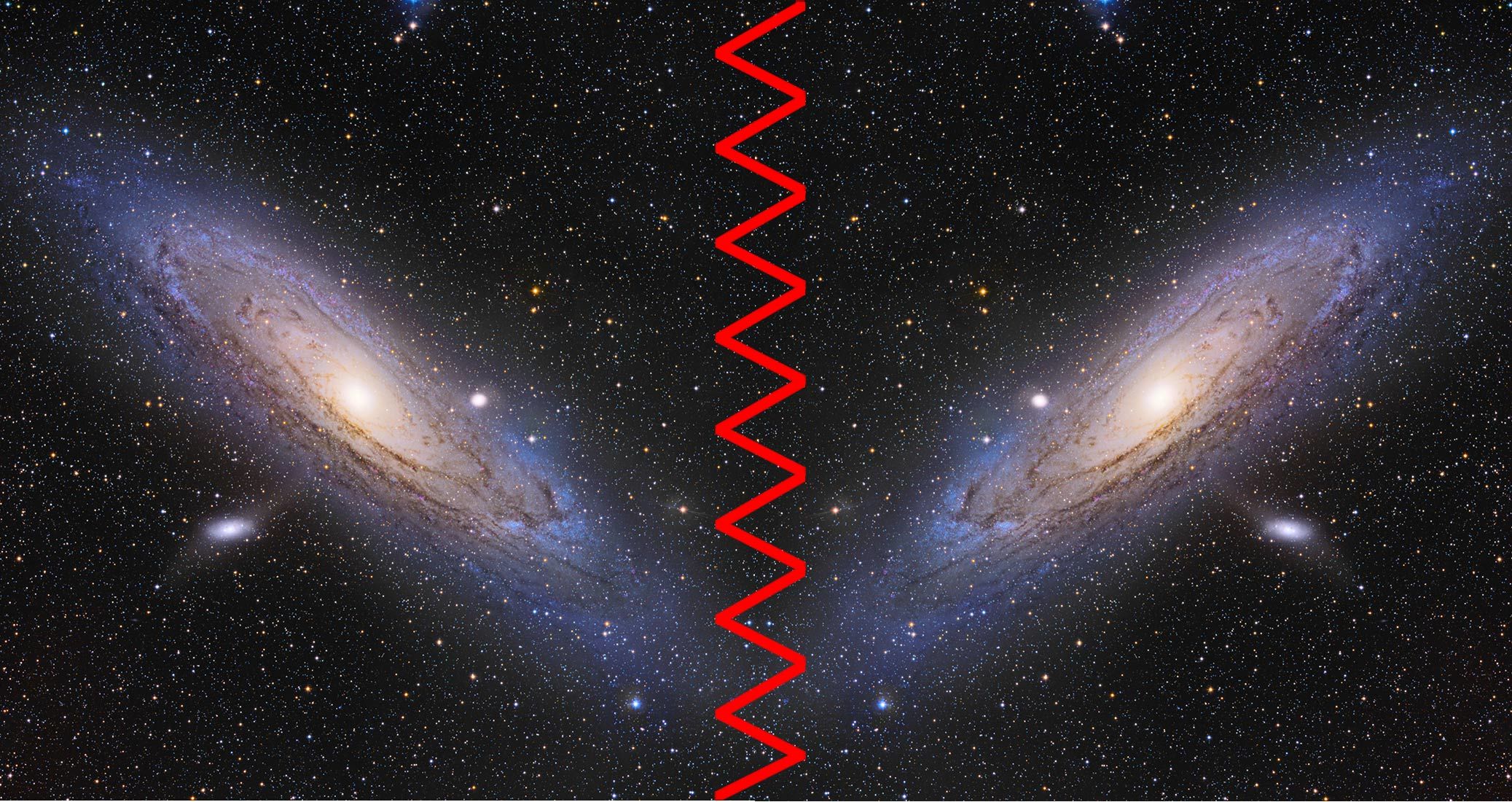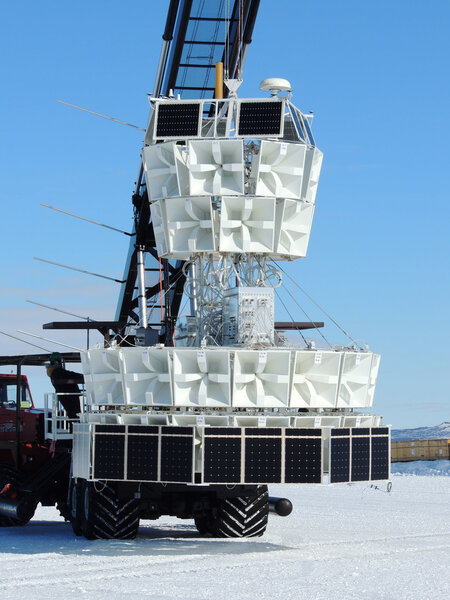Create a free profile to get unlimited access to exclusive videos, sweepstakes, and more!
No, NASA did not discover a parallel universe where time runs backwards

Have you heard that a NASA particle detector experiment discovered a parallel universe where time runs backwards? It's all over social media, mostly with people making jokes questioning what else 2020 has in store for us, but it also seems to have piqued a lot of folks' interest. I've had many queries asking me if the story is true. Is it?
Quick answer: No.
Longer answer: No, it isn't.
More detailed answer: Well, this'll take a sec to explain. But the bottom line is this particle detector did find something really strange, but it's not clear what it is. Saying it "discovered" a parallel universe is simply not true. At best the data are consistent with this idea, but that's a long, long, looooooooong way from actually finding alternate realities.
The experiment at the heart of all this is the Antarctic Impulsive Transient Antenna, or ANITA. It's a University of Hawaii experiment funded in part by NASA and also by the DOE (so the claim that "NASA" found anything is a little misleading, though it makes for a fun clickbaity headline). What ANITA looks for is neutrinos.
A neutrino is a weird subatomic particle. It has almost no mass and doesn't interact with normal matter very easily, making it hard to detect. In general, a neutrino can pass through huge amounts of matter like it's not even there.
But they play a big role in particle physics and astronomy. A lot of extremely high-energy events (like supernovae and black holes gobbling down matter) can emit lots of neutrinos, so many that even though a teeny fraction interacts with matter it happens often enough to detect.
That's where ANITA comes in. When extremely energetic neutrinos slam into the ice in Antarctica they emit little bursts of radio waves, and the characteristics of the bursts tell you a lot about the characteristics of the neutrino events.
ANITA is made up of antennas that detect radio waves. It floats in a balloon many kilometers above the ice, watching for those radio bursts. It finds lots of such events, but only a few are actually cosmological, coming from astrophysical sources in space. One such event is what's called a cosmic ray shower: Super-high-energy subatomic particles like electrons and protons slam into our air and create a cascade of subatomic particles moving downward, a bit like how a bullet hitting a rock will create a shower of shrapnel. This also makes a burst of radio energy that ANITA can also detect.
Here's the weird bit. Over the course of four flights, ANITA detected two anomalous radio bursts that, from their characteristics, appeared to be like cosmic ray showers moving upward. That's the opposite of what you expect!
And that's really weird. The only way you'd expect to see something like that is if a particle moved through the Earth, north to south, and created the particle shower after it emerged in Antarctica. Cosmic rays cannot do this.
But wait, you think: Neutrinos can pass through the Earth, right, so maybe that explains it?
Yes, neutrinos can indeed pass through the Earth, but critically it depends on their energy. Relatively low energy ones can, but the higher their energy, the less matter they can pass through without interacting. At high enough energies to explain the ANITA results they can't pass through matter much at all before hitting something.
So if a neutrino at that energy can't pass through the Earth, what created the upward moving particle shower?
And that's the big question! Scientists have been trying to figure it out for a while.
Some have looked to standard explanations. For example, maybe some cosmic source emitted so many high-energy neutrinos that just by chance a couple of them could pass through the Earth, unlikely as that might be. But if this were the case other detectors (like IceCube) would've definitely seen something, and nothing was found.
Weirder things have been considered, too, like "new physics," strange variations on what we think we understand; one such case is odd forms of dark matter that could generate similar signals. These are generally considered unlikely, but if everything else is eliminated as a candidate, then looking into new physics is the next step. It's how dark matter and dark energy were discovered, for example.
But it could be more mundane. An experimental result is only as good as your understanding of what can affect the experiment. Weird results could be due to some effect you didn't know about. That could be inside your device (remember the faster-than-light neutrino foofooraw a few years back?) or some way the environment affects things. That's been investigated as well, and may very well explain the anomalies.
Physicist Alex Pizzuto put up a short Twitter thread on exactly this:
To be fair it's possible that something really, really weird actually is going on, something so outside our normal framework of physics that is seems, well, silly. Mind you, that's OK: When you really start running out of explanations, you turn to the odder and odder. Again, dark energy is about as weird as it gets, and astronomers argued about it for years before finally accepting it as the best explanation of various observations.
And it doesn't get more bizarre than postulating a different universe where time runs backwards! In such a universe a lot of the physics we understand in our own Universe would be backwards, too. Electrons would have a positive charge instead of negative, protons negative instead of positive, making antimatter rule there instead of matter. In the macroscopic world you could unscramble an egg, and the cosmos would be contracting instead of expanding. To us it would be chaos, cats and dogs living together.
Mind you, this is wholly theoretical, just an idea. I’m not even sure this idea was seriously proposed; original sources have been hard to find since the tabloids promoting this story seem to just quote each other.
[UPDATE (22 May 2020): AHA! A friend sent me links to a paper that postulates the idea of a "backwards Universe" and shows how the ANITA results are consistent with it. There's also an article about this idea that explains it pretty well. I want to be clear: I am not denigrating this idea! It sounds like a perfectly sound hypothesis; it also just seems bizarre. That doesn't mean it's wrong, as I pointed out about dark matter and dark energy. The point I am trying to make here is that there's a difference between "evidence consistent with a backwards universe" and "discovering the existence of a backwards universe", a difference a lot of stories missed.]
To explain the ANITA data not only would this opposite universe have to exist, it would also have to somehow affect own Universe in such a way as to have its antichronometric particles interact with our own forward-time-traveling particles in an unknown manner such that particles showers move up from the ice instead of down from space.
Or, y'know, it could be a loose screw in the detector.
I'm being flippant, but I'm trying to make a point. There are still ways these results could come from something relatively mundane without invoking Star Trek-like mirror Universes. Only after these more run-of-the-mill ideas are shown to be wrong should you start to seriously entertain the truly bizarre.
In my opinion, we're not there yet.
What would help would be more detections of these weird showers, especially from different detectors. That might rule out that this is happening inside ANITA. Also a more thorough analysis of how the Earth itself affects the results, since they're using the planet as a kind of detector.
Certainly, as Arthur Conan Doyle wrote using the voice of Sherlock Holmes, "When you have eliminated the impossible, whatever remains, however improbable, must be the truth."
The problem there is knowing when you've completely eliminated the impossible. Until that point, stick with the possible. Or even merely probable.

















